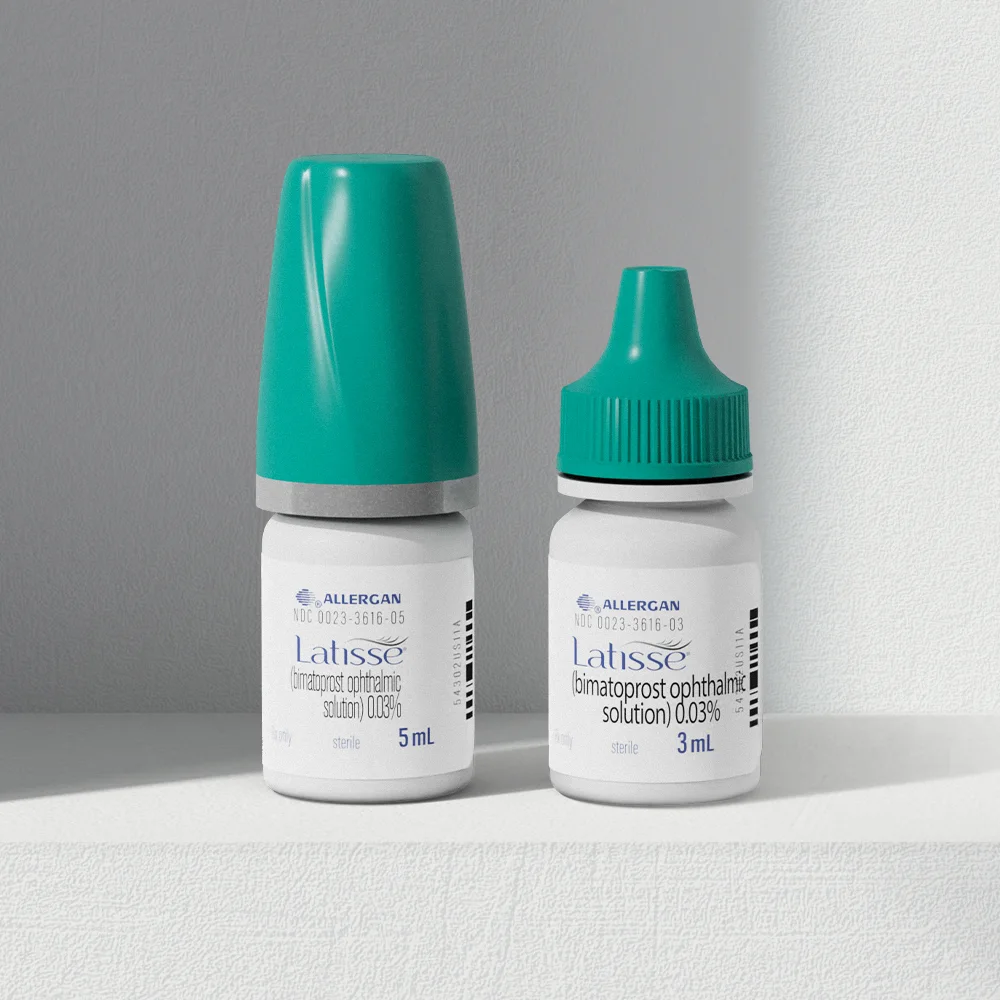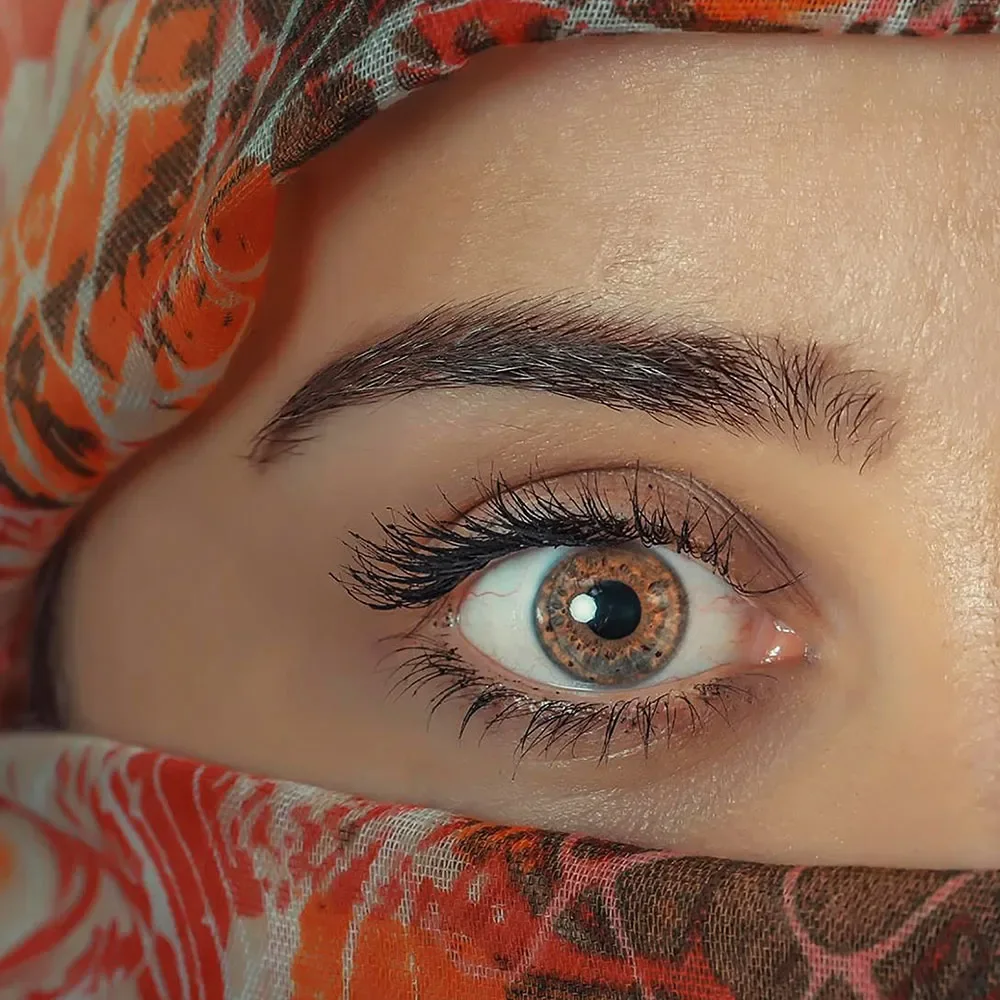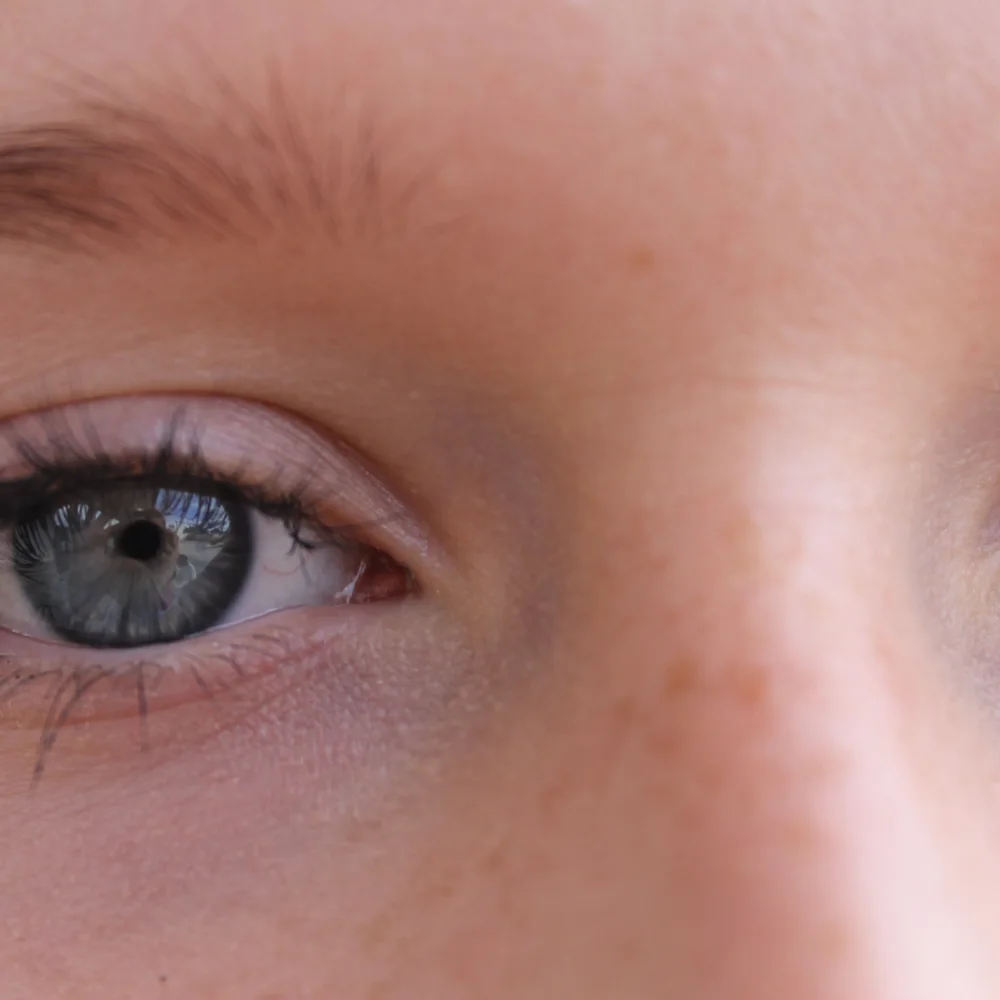Here's what we'll cover
Here's what we'll cover
Many people find long, thick eyelashes attractive. But unless you’re one of the lucky few who come by those naturally, you likely have to apply some mascara to get your desired look. Latisse is another option that improves your eyelashes, rather than just enhancing them. Here’s what you should know about this eyelash-boosting medication.
What is Latisse?
Latisse (bimatoprost ophthalmic solution) is a prescription medication used to treat inadequate eyelashes (hypotrichosis). Some research shows that Latisse may also improve eyebrow growth, but it’s not FDA-approved for that purpose yet (Barrón-Hernández, 2017).
Bimatoprost (the active ingredient in Latisse) eye drops were originally developed to treat glaucoma and marketed under the brand name Lumigan. During clinical trials, participants noticed an unexpected but welcome side effect—increased eyelash growth. This led researchers to formulate Latisse (Barrón-Hernández, 2017).
Latisse Important Safety Information: Read more about serious warnings and safety info.
How does Latisse work?
Researchers don’t know for sure how Latisse improves eyelash growth, but they think it may prolong the growth phase of the hair cycle (Fagien, 2010).
Latisse is applied using a special applicator, once per night, along the upper lash line. When used continuously, Latisse improves eyelash length, thickness, and darkness. In clinical trials, participants saw improvements in lash growth at eight weeks, but it may take up to 16 weeks to get full results (Fagien, 2010). Unfortunately, if you stop using Latisse, your eyelashes will likely return to their original appearance, somewhere between several weeks to months after stopping the medication (Allergan, 2014).
What are the benefits of Latisse?
Latisse is an easy-to-use, effective method for improving eyelash appearance. 78% of participants in clinical trials reported a significant improvement in eyelash appearance after using the product for 16 weeks (Allergan, 2014).
But what about other methods for enhancing your eyelashes? Here’s how some options compare (Fagien, 2010):
Mascara: Mascara is an inexpensive option and is easily accessible at your local drug store. But it only provides temporary benefits and is prone to smudging. Because of its many ingredients, some people develop skin irritation or allergic reactions. There is also an increased risk of infection.
Over-the-counter, non-mascara options: Several non-prescription products are available and marketed as “eyelash stimulators,” “eyelash enhancement serums,” or “eyelash conditioners.” Like Latisse, these products claim to enhance the length, fullness, or darkness of your eyelashes. But since the FDA does not regulate over-the-counter products, their effectiveness and safety often have not been thoroughly studied.
Artificial eyelashes: Artificial eyelashes are made from human hair or synthetic material. These products are available as sets of strips that you apply to the eyelid or individual strands professionally applied to existing eyelashes. Individual strands take a considerable amount of time to apply and can be expensive. Some people are sensitive to the glue used to attach the eyelashes and can develop an allergic reaction.
Eyelash transplants: Eyelash transplant surgery was initially developed to replace damaged eyelash follicles from trauma or burns. Although controversial, this procedure is now being used for cosmetic purposes as well. Because the surgeon uses hair from your scalp for the transplant, your new eyelashes will grow like scalp hair and require regular trimming and curling. As with any surgery, the potential for risks exists, including pain, bleeding, and scarring.
Side effects of Latisse
Latisse is a well-tolerated medication. The most common side effects reported in clinical trials only occurred in less than 4% of participants. These included (Allergan, 2014):
Dry eyes
Eye irritation
Eyelid skin darkening
Eye redness
Itchy eyes
Redness around the eyes
Latisse has other possible side effects, including unwanted hair growth and possibly permanent changes to your eye color. See below for more information on these potential effects and how you can decrease your odds of experiencing them.
Cost of Latisse
Latisse is not typically covered by insurance since it’s used for cosmetic purposes. A month’s supply will generally cost you around $100–150, depending on where you purchase it from. If you decide to continue Latisse long-term, purchasing the larger bottle that lasts ten weeks is more cost-effective than buying the monthly bottle. A generic version of Latisse is also available at a reduced cost.
How to get Latisse
Latisse requires a prescription from your healthcare provider. Dermatologists and plastic surgeons often prescribe Latisse, but other healthcare providers familiar with the product may write you a prescription.
Several online services are also available. After a virtual consultation with a healthcare provider, you may purchase Latisse directly through their websites.
Latisse safety information
Before using Latisse, be sure to review this safety information and discuss any concerns you have with your healthcare provider (Allergan, 2014):
Risk of infection: The Latisse bottle should remain clean and intact. The tip of the bottle should not touch any surfaces other than the applicators to prevent contamination. Only apply Latisse with the sterile applicators provided with the kit. Each applicator should only be used once, for one eye, and then thrown away. Reusing applicators can increase the risk of developing an eye infection.
Contact lenses: If you wear contact lenses, be sure to remove them before applying Latisse. Latisse can cause your contact lenses to become discolored, so don’t reinsert them for at least 15 minutes after applying Latisse.
Skin darkening: Latisse can cause the skin of the upper eyelid to darken, which seems to get worse the longer you use the product. Skin color typically returns to normal after stopping Latisse.
Unwanted hair growth: Hair growth can occur in other areas if Latisse comes into contact with the skin. Be sure to only apply Latisse to the upper eyelid margin at the base of the eyelashes. Use a tissue to blot any excess Latisse to prevent it from dripping onto your cheeks or other areas.
Iris color changes: Rarely, Latisse may cause your iris (the colored part of your eye around the pupil) to become browner. This effect is expected to be permanent, even if you stop using Latisse. Do not apply Latisse to the lower eyelid or into your eye.
Other conditions: Let your doctor know if you use eye drops for glaucoma, have eye inflammation, macular edema, or any other eye problems. Be sure to mention if you are planning to have eye surgery as well. Your healthcare provider will evaluate if you can safely use Latisse.
Pregnancy/breastfeeding: There are no studies evaluating the use of Latisse in pregnant people, so your healthcare provider will likely recommend you stop using Latisse if you become pregnant. The manufacturer of Latisse recommends caution while breastfeeding since animal studies showed that Latisse was present in breast milk.
If you’re self-conscious about your sparse eyelashes, you may have trouble looking or feeling your best. Talk with your healthcare provider to see if Latisse is an option for you—it may just be the eyelash (and confidence) boost you need.
DISCLAIMER
If you have any medical questions or concerns, please talk to your healthcare provider. The articles on Health Guide are underpinned by peer-reviewed research and information drawn from medical societies and governmental agencies. However, they are not a substitute for professional medical advice, diagnosis, or treatment.
Allergan. (2014). Highlights of prescribing information: Latisse. Retrieved from https://www.accessdata.fda.gov/drugsatfda_docs/label/2014/022369s008s010lbl.pdf
Barrón-Hernández, Y. L., & Tosti, A. (2017). Bimatoprost for the treatment of eyelash, eyebrow and scalp alopecia. Expert Opinion on Investigational Drugs, 26 (4), 515–522. doi: 10.1080/13543784.2017.1303480. Retrieved from https://pubmed.ncbi.nlm.nih.gov/28264599/
Fagien S. (2010). Management of hypotrichosis of the eyelashes: Focus on bimatoprost. Clinical, Cosmetic and Investigational Dermatology, 3, 39–48. doi: 10.2147/ccid.s5488. Retrieved from https://pubmed.ncbi.nlm.nih.gov/21437058/












